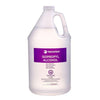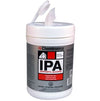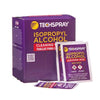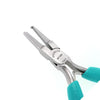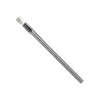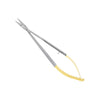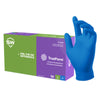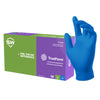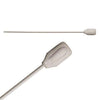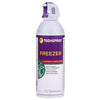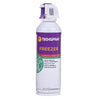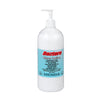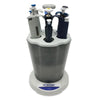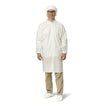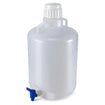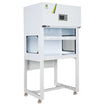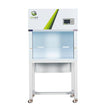- No products in the cart.
Choosing the Right Lab Chiller: Factors to Consider
Aug
12
2023
In the dynamic realm of scientific exploration, the right lab chiller can be the linchpin of success. Precision temperature control is the cornerstone of effective experiments across diverse fields. This blog post is your compass for deciphering the labyrinth of lab chiller options. We'll spotlight crucial factors to guide your decision-making process and ensure seamless operations and optimal outcomes.
Cooling Capacity: The Pulse of Performance
At the heart of your lab chiller choice lies the cooling capacity – the engine that regulates temperature. Measured in watts or BTUs per hour, cooling capacity determines how efficiently the chiller can whisk away heat. Striking the right balance is vital; inadequate capacity risks unstable temperatures, while excessive power inflates energy bills. Gauge your lab's cooling needs precisely to pinpoint the optimal cooling capacity.
Temperature Range: The Art of Precision
Each experiment waltzes to a different temperature tune. Thus, a chiller's temperature range becomes a crucial note to hit. Some applications demand a narrow spectrum, while others flourish with broader versatility. Choosing a chiller that nails your required temperature range ensures your research hits the right notes every time.
Energy Efficiency: Sustainability Meets Savings
In the modern age of environmental consciousness, energy efficiency emerges as a protagonist. A chiller that sips energy not only curtails your carbon footprint but also fuels long-term cost savings. Scout for chillers with smart compressor tech, variable speed drives, and optimized refrigeration cycles – they're your ticket to greener and more economical lab operations.
Space and Footprint: Where Efficiency Meets Compactness
Lab real estate is precious – every inch counts. A chiller's dimensions need to harmonize with your workspace's symphony. Compact, efficient designs let you orchestrate your lab layout while orchestrating top-tier cooling performance. Moreover, take note of installation prerequisites – some units require specific ventilation or clearance.
Reliability and Maintenance: The Reliability Rhapsody
In the scientific crescendo, reliability is the conductor. A hiccup-prone chiller can shatter your symphony of experiments. Opt for reputable manufacturers renowned for their quality. Seek out self-diagnostic features and user-friendly interfaces that streamline maintenance. A chiller with easily accessible components ensures swift troubleshooting and servicing – an ode to seamless lab workflow.
Compatibility: The Integration Sonata
Lab chillers rarely solo – they join an ensemble of equipment. Compatibility is your harmony checklist. Scrutinize connection options, flow rates, and pressure specs to choreograph a seamless integration. Some manufacturers offer tailored solutions, finetuning chiller specs to your specific score.
Noise Level: The Serene Laboratory Sonata
Lab acoustics influence focus and productivity. Amidst the spotlight on performance, noise level is a subtle but significant note. Opt for chillers harmonized with soundproofing and vibration-damping technology, composing a tranquil workspace symphony.

Budget Symphony: Balancing Quality and Cost Notes
The budget is your musical scale, but beware the siren call of frugality. Quality trumps ephemeral savings. Prioritize performance, energy efficiency, and reliability over initial costs. A pricier, well-crafted chiller promises long-term dividends via lower energy bills and maintenance overheads.
In addition to these factors, there are a few other things to consider when choosing a lab chiller:
- The type of chiller: There are two main types of lab chillers: recirculating chillers and non-recirculating chillers. Recirculating chillers circulate water through a closed loop, while non-recirculating chillers cool water that is then discharged into the environment. Recirculating chillers are more efficient than non-recirculating chillers, but they can be more expensive.
- The features of the chiller: Some chillers come with additional features, such as alarms, timers, and remote monitoring capabilities. These features can be helpful in some applications, but they may not be necessary for all labs.
Conclusion
In your voyage through the lab chiller galaxy, every factor harmonizes to define your crescendo of success. Tune into cooling capacity, temperature range, energy efficiency, footprint, reliability, compatibility, noise level, and budget for a melodious decision. The right lab chiller becomes the orchestra conductor, ensuring seamless experiments, accurate results, and propelling scientific endeavors toward new horizons.
For over 40 years, Lab Pro Inc. has been committed to delivering the highest quality lab equipment such laboratory chillers, lab supplies, Excelta hand tools, reagents, distance learning kits, and cleanroom PPE apparel. Renowned by global medical device companies and laboratories, we ensure exceptional quality in every product. Contact us online or call 888-452-2776 to learn more. Discover top-notch lab supplies and elevate your experiments today!







